While remote and hybrid work was once imagined as a temporary state, for many business owners and employees, working from home has become the new normal. However, one of the challenges of working remotely is creating an office in a small space or finding a place to work outside of a dedicated room.
From finding the right furniture to designing on a budget, the best home office ideas for small spaces focus on doing more with less and maximizing your environment and storage space. You can also create a custom layout that suits your small business’ needs by incorporating small space tips in interior design and office technology.
1. Make the Most of Your Measurements
Creating a home office in a small space can be challenging if you are a remote worker or require a secondary workspace. Therefore, knowing your measurements is the first step in maximizing your home office. This means measuring the walls and floor to determine how much room you have to include furniture or other items in your space.
Whether you have a dedicated room in your home or want to use a small portion of an existing space, recording the measurements of the walls and floor will make it easier to design a proper layout. In most cases, a dedicated home office is anywhere from 50 to 150 square feet, which provides enough room for a small amount of furniture and storage, such as a desk, chair, and shelving.
2. Design a Small Home Office Layout
Once you have recorded these measurements, make the most of your space by designing an office layout before choosing your furniture. You can create your layout on paper by drawing a model of what your office will look like with your desired furniture or the items in your space. This layout should include your measurements so you don’t exceed your allotted space.
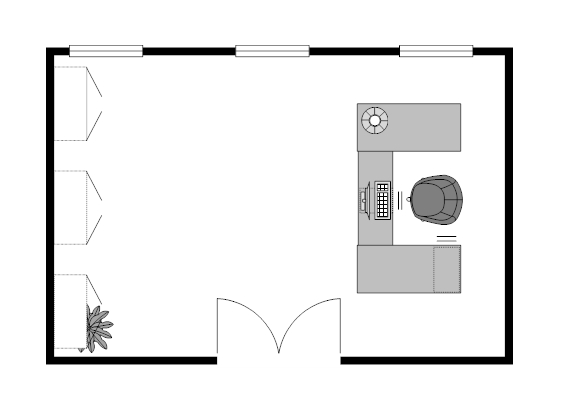
Use software like SmartDraw to design your small office layout. (Source: SmartDraw)
Additionally, you can use software like RoomSketcher or SmartDraw to design an office layout. These tools allow you to create your office based on measurements and include room features like windows, walls, and furniture. You can also choose from dozens of customizable room templates that make it easier to imagine your ideal office.
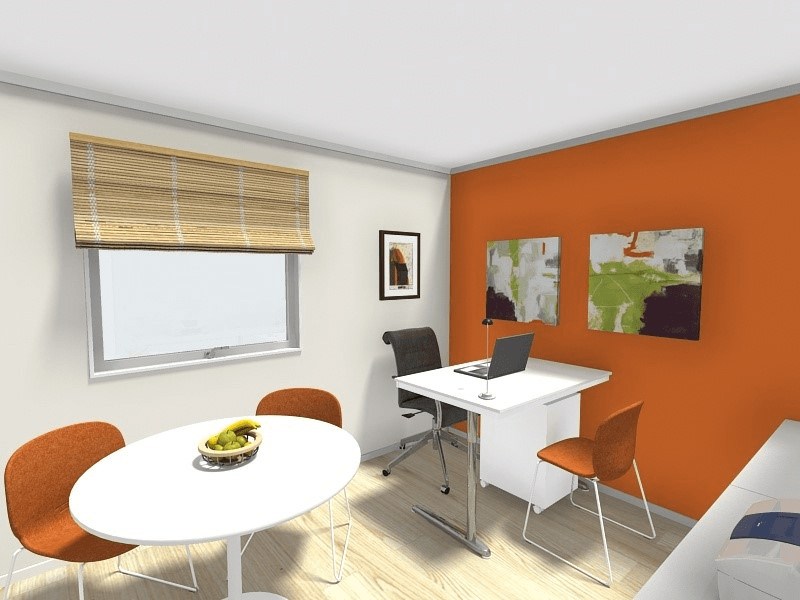
Include furniture and design elements in your layout using RoomSketcher (Source: RoomSketcher)
When creating a layout for a small office, it’s best to build your design with your work in mind. If you meet with clients in your home office, it will be important to place your desk in an alcove or secluded area of the home for privacy. If you have to manage paperwork or make sketches, you will need a desk with storage and ample surface area for documentation.
3. Find Furniture That Fits Your Space
In a larger office, you can choose multiple items to fill up your space, but in a small office, it is important to find pieces that will fit in your layout. After determining the size and dimensions of your office space, you can find furniture that fits within those measurements.
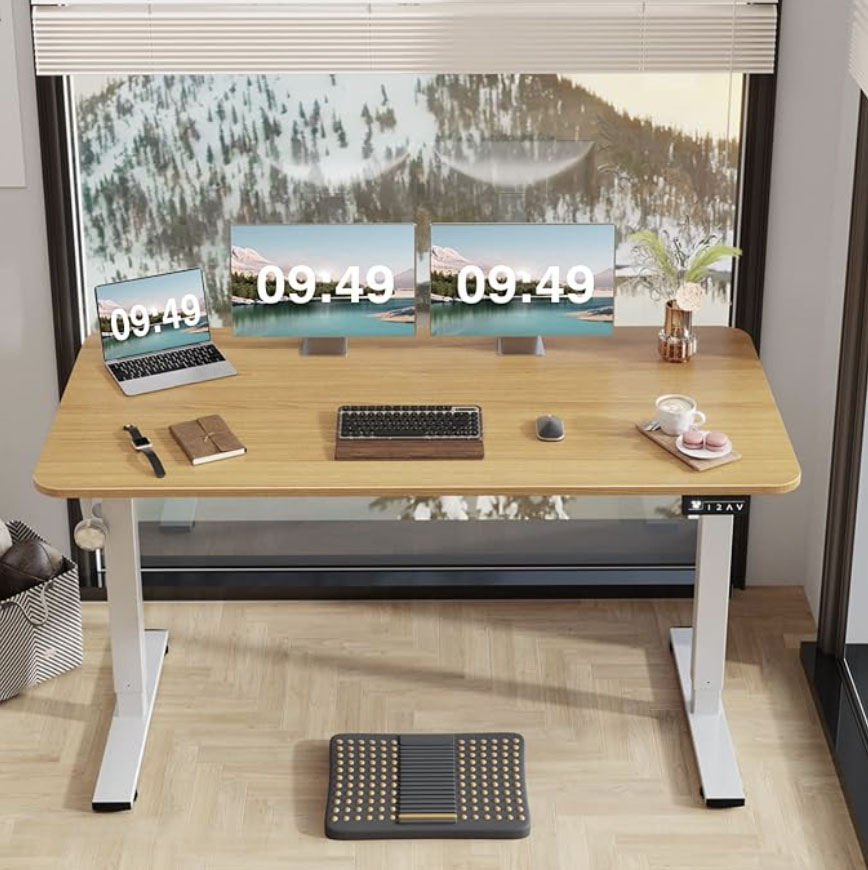
Place a standing desk in front of your window to save space. (Source: Amazon)
For example, many small offices will benefit from a desk designed for small spaces, like a console desk or standing desk. Some other desk options are triangle desks, which can fit into the corner of a room, or L-shaped desks, which fit against two connecting walls. Finding an ergonomic chair that fits well with your desk is also necessary if you don’t choose a standing option or space that already includes seating.
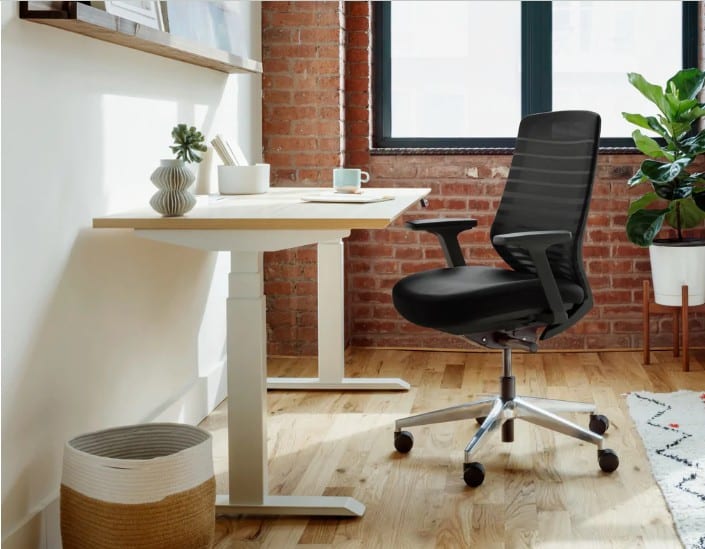
Rolling chairs are ergonomic and easy to store under your desk. (Source: Branch Furniture)
If you create a home office in a high-traffic area in your home, such as the kitchen or entryway, choose a chair that fits snugly underneath your desk, like a rolling chair or stool. However, if you place your desk in the living room or bedroom, consider choosing a chair that matches your decor, like an upholstered or leather armchair.
4. Expand Your Office With Interior Design
Another way to make your office feel bigger is by including decor or design elements that expand your space. For example, one of the easiest ways to make a room feel larger is by using lighter or brighter colors for your walls and decor. Consider neutral color schemes in your office area, like beige and white or cool blues and grays.
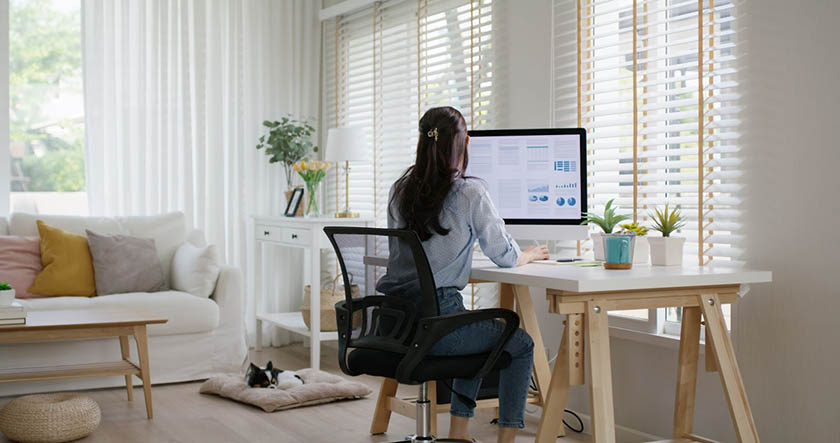
Place your desk in a well-lit room or area to improve meeting lighting.
Using bright and neutral colors not only helps to expand your space but can also improve your lighting. Combining a neutral background with proper lighting, such as a desk light or floor lamps, makes you visible to clients or colleagues in remote meetings, and you can see your screen while working from home.
Visit the Pinterest board for home office ideas for small spaces.
Additionally, decorative elements that can bring more light and expansion into your workspace include hanging plants that improve air quality or a sheer window treatment that allows you to look out your window and brings natural light into your home office.
5. Incorporate Space-saving Tools & Technology
Although organization is integral to setting up any home office, creating a clean working area is even more critical when you have limited space. Storage solutions, systems, and gadgets are some of the best space-saving tools within a small office. Check out the tabs below for space-saving tools and office gadgets to streamline your workspace when designing a small home office layout.
Desk Organizers
Most small offices only have enough room for a desk, so organizing your desk with tools that help conserve space is necessary. Some popular desk accessories include file organizers, desk shelves, and cabinetry to store essential documents. You can also use risers or stands to elevate your laptop or monitor and free up surface space to work on projects from your desk.
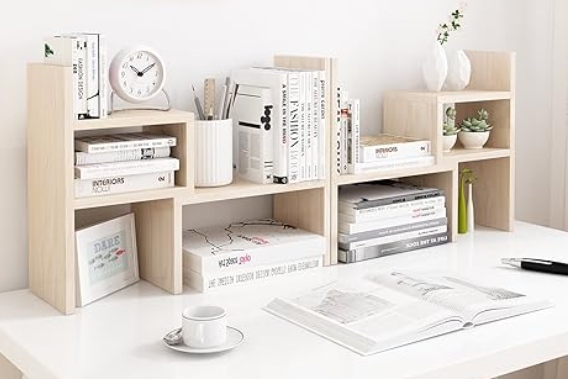
The Jerry & Maggie Desktop Organizer is customizable and comes in multiple colors. (Source: Amazon)
Cable Management
Excess wires and cables can make your office appear more cluttered and take up valuable surface area when you have limited space. To help organize your technology, consider using a cable holder or organizer to keep wires from tangling or taking over your desk.
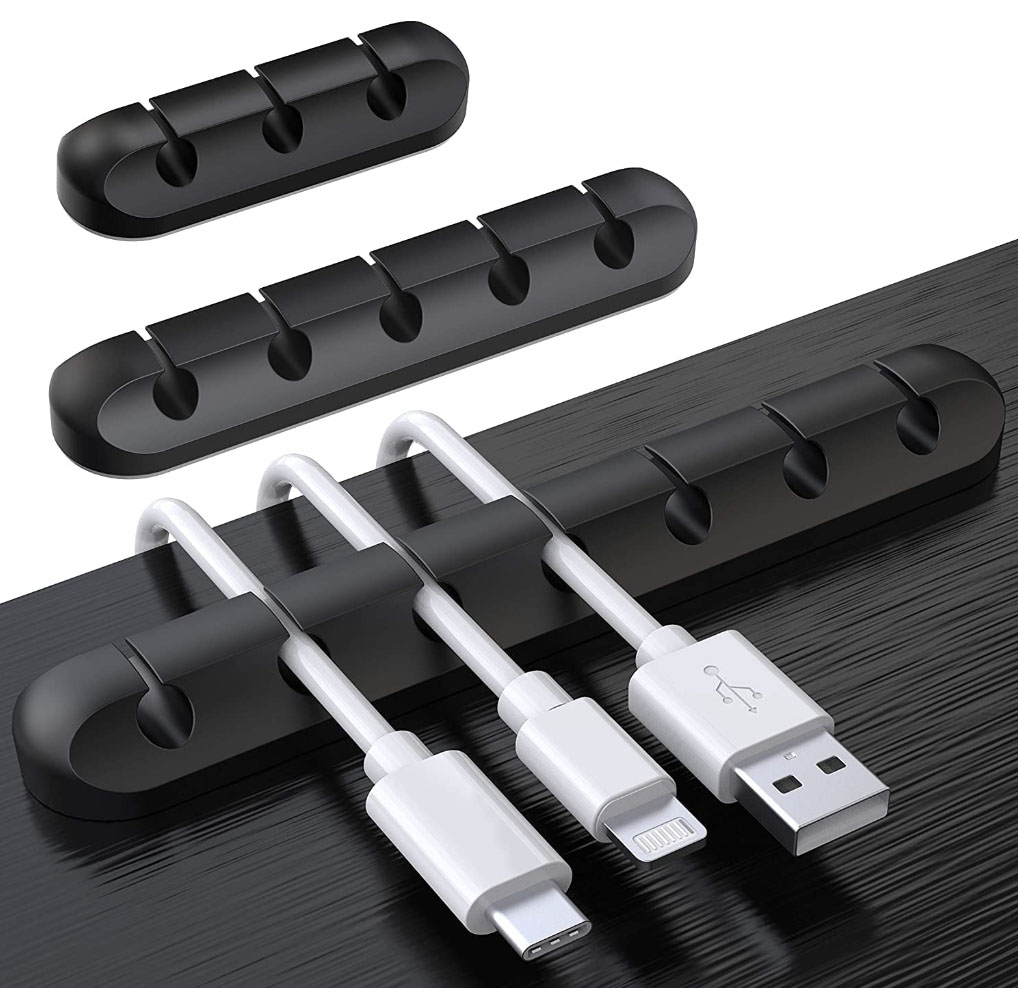
The SOULWIT cable holder houses and separates wires and cables. (Source: Amazon)
Wall Storage
Although you might not have much floor space, you can use the space on your walls or under your desk for additional shelving and storage. Many wall storage systems on the market are made for small home offices, allowing you to customize your shelving with different components.
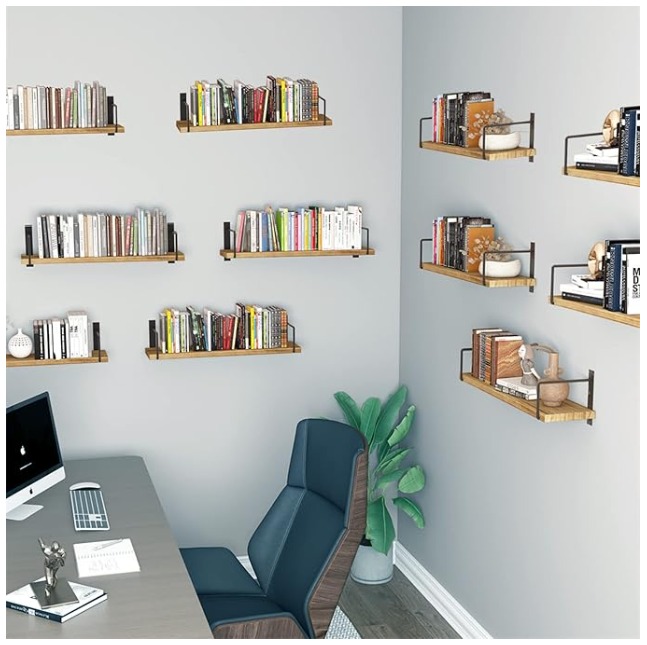
Floating shelving is a great way to expand your storage space. (Source: Amazon)
Smart Gadgets
There are many small gadgets that you can include in your workspace to maximize productivity. Instead of using a large desktop computer or double monitor screens, consider purchasing a portable monitor that sits beside your laptop and can be folded flat when not in use.
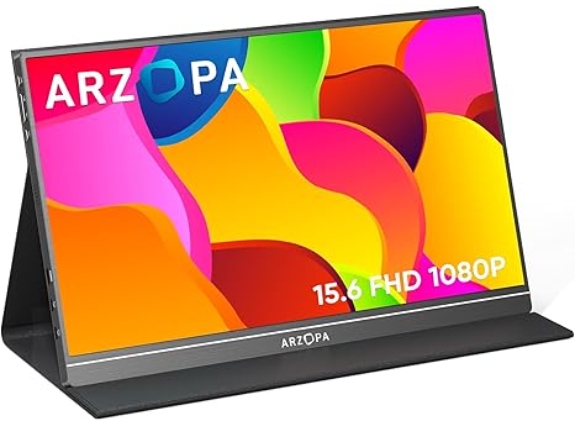
The ARZOPA Portable Monitor offers a high-quality picture in a small size. (Source: Amazon)
Noise-canceling Devices
It will be important to keep noise and distractions to a minimum depending on how many people you live with or where you place your office in the home. If you live in a noisier area or have a less private office space, consider purchasing noise-canceling headphones to improve your focus and productivity. I also recommend headphones with a microphone to make calls and enhance the audio quality of your video meetings.

Check out the Sony WH1000XM4 headphones for noise reduction and voice control. (Source: Amazon)
6. Try Budget-friendly Ideas for a Small Home Office
Many small office ideas focus on things you can purchase to improve your office design or layout. However, you don’t have to buy new office furniture to enhance your space. For budget-conscious business owners, consider the following DIY projects and design hacks to revitalize your office space or upcycle items found in your home.
Create a Multi-purpose Space
If you don’t have any traditional office furniture and don’t want to purchase new furniture, you can use what you already have in your home to create a small office space. For example, you can use a kitchen or entryway table to complete work or turn a closet into a Zoom meeting room.

Add a chair to turn a kitchen table into a small home office.
Simply take stock of your available furniture and surface space, then create a layout or plan for utilizing that space for your business. Then, you can decide if you must include more office furniture or if a makeshift space works best for you.
Do-It-Yourself Desk Accessories
Although you can purchase many space savers and storage solutions, you can also create accessories to organize your home office. For example, if you have extra cardboard boxes from gifts or packages, you can use those boxes to create modular shelving for your work desk.
Use extra boxes to create a file organizer, cell phone holder, or even a laptop stand that will save space on your desk. Using cardboard to create pinboards to hold notes and reminders and make weekly or monthly calendars from recycled paper products is also simple.
Furniture Upcycling
Outside of repurposing your home furniture for your office, you can also find furniture online or in your neighborhood ready to upcycle. You can often find free furniture for pickup on sites like Facebook Marketplace, Craigslist, or the Nextdoor Neighborhood App.
Discounted furniture is available at donation centers like Goodwill or The Salvation Army, and you can upcycle these items by changing the furniture’s paint, fixtures, or fabric at a very low cost compared to purchasing new furniture for your space.
Visit the Pinterest board for DIY small home office ideas.
Frequently Asked Questions (FAQs)
Maximize your space in a small office by creating a layout and selecting furniture that works for your space. First, measure your space to make selecting pieces that fit in your office easier. Then, outline your office space with your measurements and choose furniture that can be arranged to maximize space. For example, select L-shaped desks, modular storage, and shelving to create a clean and organized layout.
Where you place your office depends on your work and how much privacy you will need. If you only use your office space for working on tasks but don’t host meetings or manage a team, then you can create a small office space in any place that can house a laptop or computer. In contrast, using a private or enclosed space will work best if you regularly hold virtual meetings or communicate with clients.
Some common challenges with designing a small home office space are working with less square footage than a traditional office and creating privacy within a shared environment. Especially for those who don’t have a designated room to design an office, it is essential to use gadgets that minimize noise, improve lighting, and create the appearance of a private office, even when working from a shared space in the home.
Bottom Line
According to numerous remote work statistics, more people are not only working from home, but more businesses are including remote and hybrid workplaces to satisfy the needs of their employees. However, this shift towards remote work means that more people want to make the most of their home office and create a space that encourages efficiency and productivity.
Whether you are looking for home office ideas, small space solutions, or creating a workspace that balances functionality, comfort, and aesthetics, the tips in this article will help you find the best office tools and technology.